Historical overview of Norse Lagan.
Early Years
NORSE LAGAN was originally completed by the Davie Shipbuilding shipyard in Lauzon (Quebec, Canada) for Canadian government controlled CN Marine as the Canadian train ferry FREDERICK CARTER in January 1968. She was named in honour of Sir Frederick B.T. Carter, a former speaker in the Newfoundland House of Commons.
FREDERICK CARTER was recognised as the worlds largest train ferry in the 1983 “Guinness Book of Facts and Feats of Ships and Shipping”. She was designed to carry freight wagons between Newfoundland and the Canadian mainland.
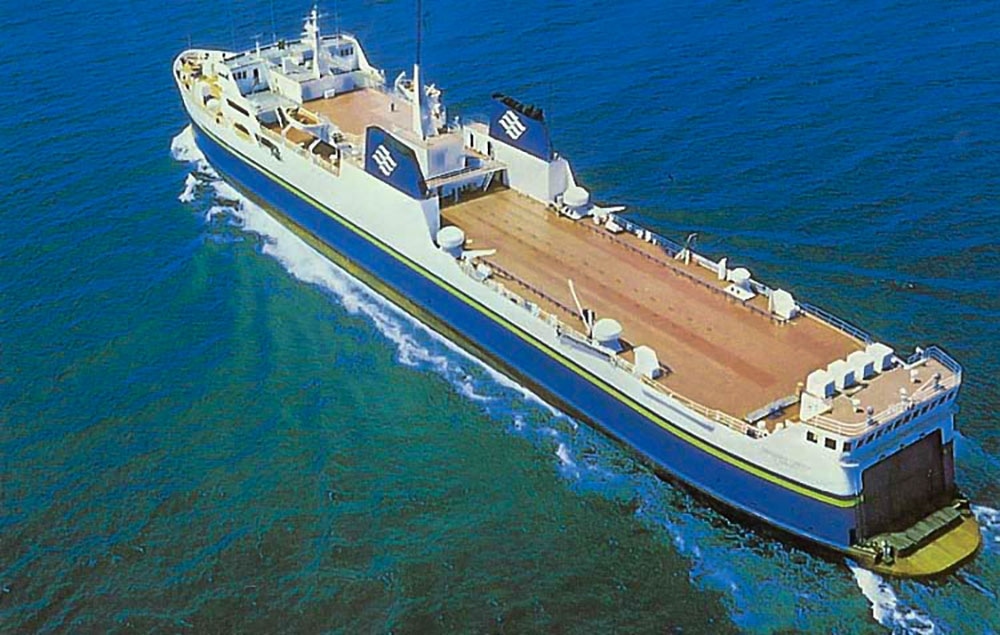
Conversion
During 1988 she was sold for service elsewhere following a decision to end the rail-ferry service, arriving at the end of November at the Öresundsvarvet shipyard in Landskrona (Sweden) for rebuilding/lengthening.
FREDERICK CARTER was moved to the Polish Navy yard at Gdynia in January 1990 for the rebuilding to be competed, before entering service for Nordö-Link as HANSA LINK between Malmo and Travemünde in April the same year.
The rebuilding work had created one of the largest capacity RoRo passenger ferries in the world at the time with capacity for up to 2,400 lane metres of freight and 800 passengers, but also gave HANSA LINK a rather ungainly appearance with large sponsons on both sides.
HANSA LINK was now almost 30m longer and 3m wider than originally built having originally only had capacity for 12 passengers. Following a short charter to DFDS for service across the North Sea, HANSA LINK was chartered to transport troops to the Persian Gulf for the first Iraq War.
Norse Irish Ferries
In November 1991 HANSA LINK was again sold, this time to Wagenborg shipping of The Netherlands. Wagenborg immediately chartered her to Norse Irish Ferries for their new service between Belfast and Liverpool as NORSE LAGAN. Initially she was partnered by the freighter TRANSGERMANIA then a second freighter NORSE MERSEY (i).
During the Christmas period of 1991 NORSE LAGAN carried her first tourist passengers, an experiment to see if there was enough demand. The experiment was deemed a success with non-freight passengers and vehicles carried on a permanent basis from early 2002.
In 1994, NORSE LAGAN had her homeport changed from Nassau (Bahamas) to Delfzijl (The Netherlands). Delfzijl is the home town of then owners Wagenborg.
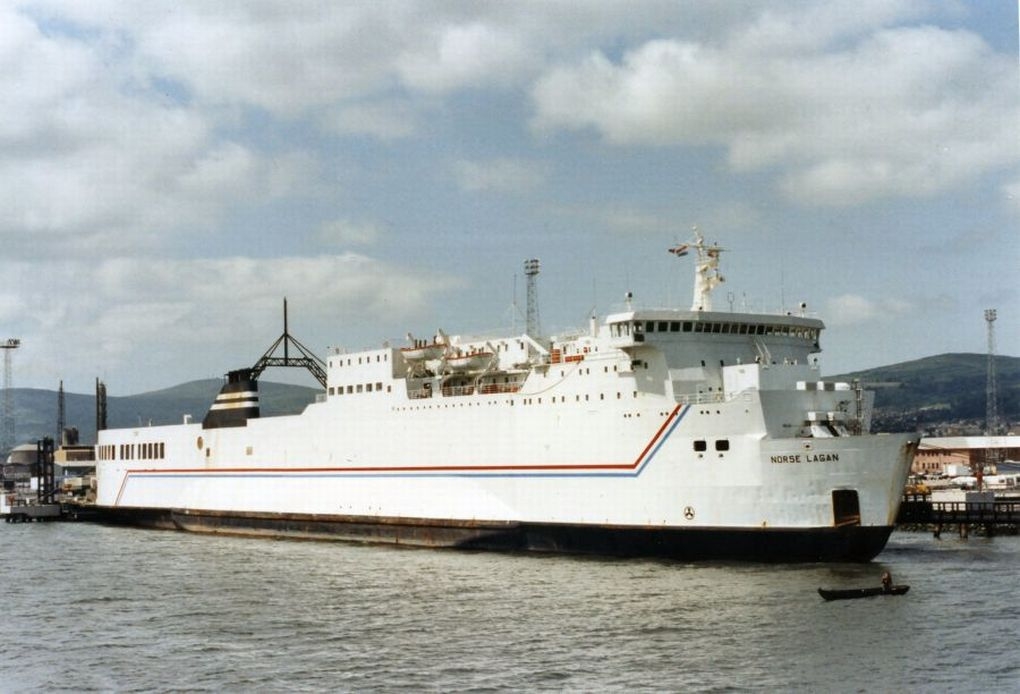
NORSE LAGAN had proven herself as a successful vessel on her new route, helping to re-establish and prove the viability of the link between Belfast and Liverpool, and so in June 1996 Norse Irish Ferries purchased her and switched her home port to Douglas (Isle of Man).
Replacement
Also in 1996, Norse Irish Ferries announced that they had agreed the charter of two new RoPax ferries currently under construction at the Visentini yard in Italy which would be delivered the following year. In the meantime a brand-new RoRo vessel NORSE MERSEY (ii) had been chartered from the same yard to run opposite NORSE LAGAN.
The new RoPax ferries would replace both NORSE LAGAN and her new running mate, and would allow Norse Irish Ferries to operate additional daytime sailings due to their superior speed compared to the existing vessels. For the first time the company would also have vessels which had been purpose-built for the carriage of passengers, rather than having been converted for the purpose from freight only vessels.

Following the arrival of both these new vessels, MERSEY VIKING (i) and LAGAN VIKING (i), NORSE LAGAN was withdrawn from service. On the evening of 16th November 1997 she entered Liverpool’s Canada Dry Dock for maintenance. She received an updated Norse Irish Ferries livery including the corporate logo of a coloured Viking longboat sail on her funnel for the first time.
NORSE LAGAN‘s bow and funnel colours remained unchanged though despite the introduction of a new predominantly red and white corporate livery as part of the launch of the new vessels from Italy. As part of the updated livery, the “Liverpool to Belfast” text on NORSE LAGAN‘s side stability sponsons was reapplied as just “Liverpool to”.
This increased speculation that she could soon be deployed on a new Norse Irish Ferries Liverpool to Dublin route. However, once these works were completed NORSE LAGAN was laid up at Cammell Laird rather than going into service.
At the end of March she NORSE LAGAN chartered to transport troops involved in a NATO exercise in Norway. A further short charter followed with Seawind Line operating between Stockholm (Sweden) and Turku (Finland) from May to August 1998 in full Norse Irish livery, before she was laid up again, this time in Finland.
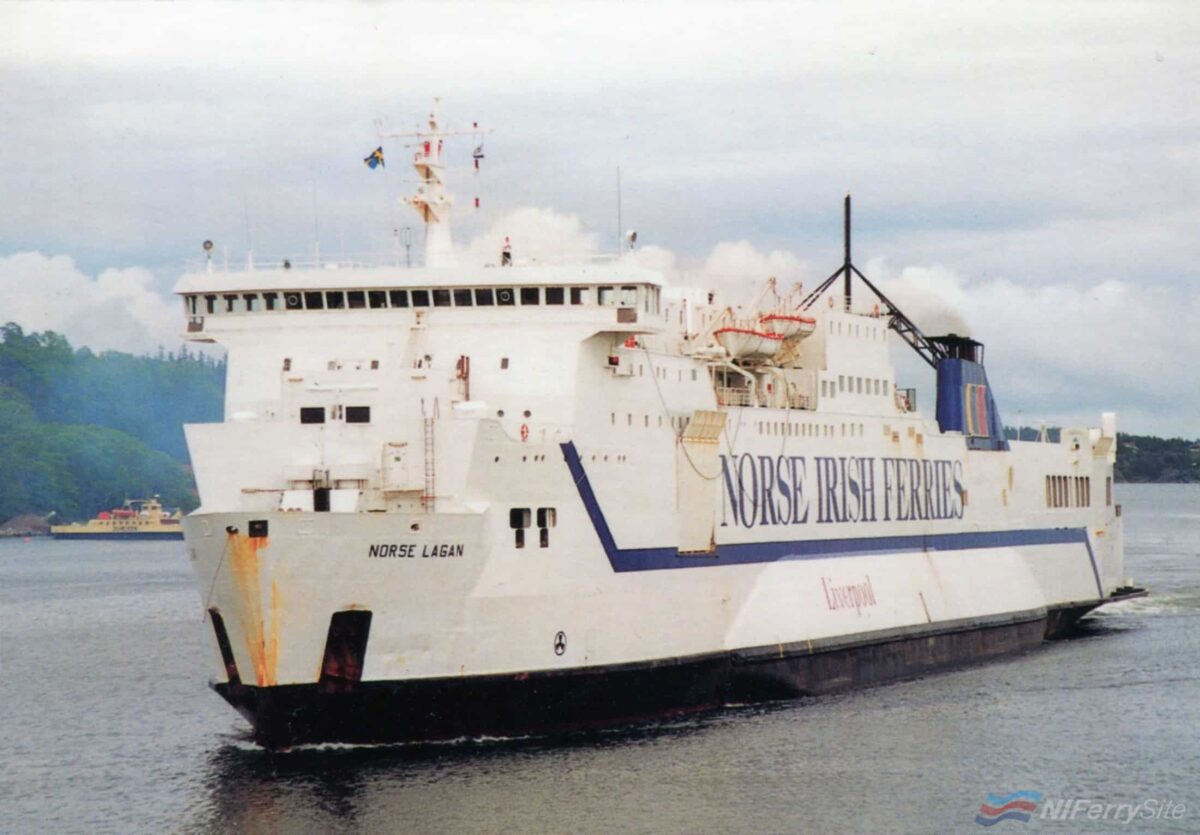
Return to the Med
During October 1998 NORSE LAGAN was purchased by Moby Lines, passing through the Kiel canal on 17th October and returning to Gdynia on the way to her new home in Italy.
Renamed MOBY RIDER she was used on a seasonal basis as a freight and no-frills passenger vessel until she ran aground on a sandbank near the entrance of the Tuscan port of Livorno on the 19th of May 2005. She had 46 freight units and a number of passengers onboard including 21 German tourists.
After a re-floating operation which involved fresh water and fuel oil being pumped off the vessel before she was pulled free, MOBY RIDER was laid up in Genoa. Despite rumours of her being used for further service in Greek waters, MOBY RIDER was sold for scrap in 2007. She arrived on June 2nd 2007 at Alang (India) renamed M.RIVER for beaching and demolition.
Afterword
A year after the sale of NORSE LAGAN, Norse Irish Ferries was sold in September/October 1999 to Cenargo group. Cenargo had introduced their own Liverpool to Dublin route through their Merchant Ferries subsidiary in February 1999, a year after NORSE LAGAN had become spare and was linked with starting a similar route. This was operated by their own new Spanish-built RoPax sister-vessels BRAVE MERCHANT and DAWN MERCHANT.
During February, Merchant Ferries confirmed they had ordered a further two sister vessels which they intended to deploy on a Liverpool to Belfast route which would have been in competition with Norse Irish Ferries. However, with the takeover of the latter this never happened and the additional vessels were chartered to Norfolk Line for their new Dover – Dunkerque route instead.
Merchant Ferries and Norse Irish Ferries would remain separate in name before they were merged together to become Norse Merchant Ferries in February 2001. Following financial difficulties at Cenargo International, Norse Merchant Ferries became a separate company for a while before being acquired by Norfolk Line.
Norfolk Line was subsequently purchased by DFDS, who soon sold the bulk of the former Norfolk Line Irish Sea operation to Stena Line.
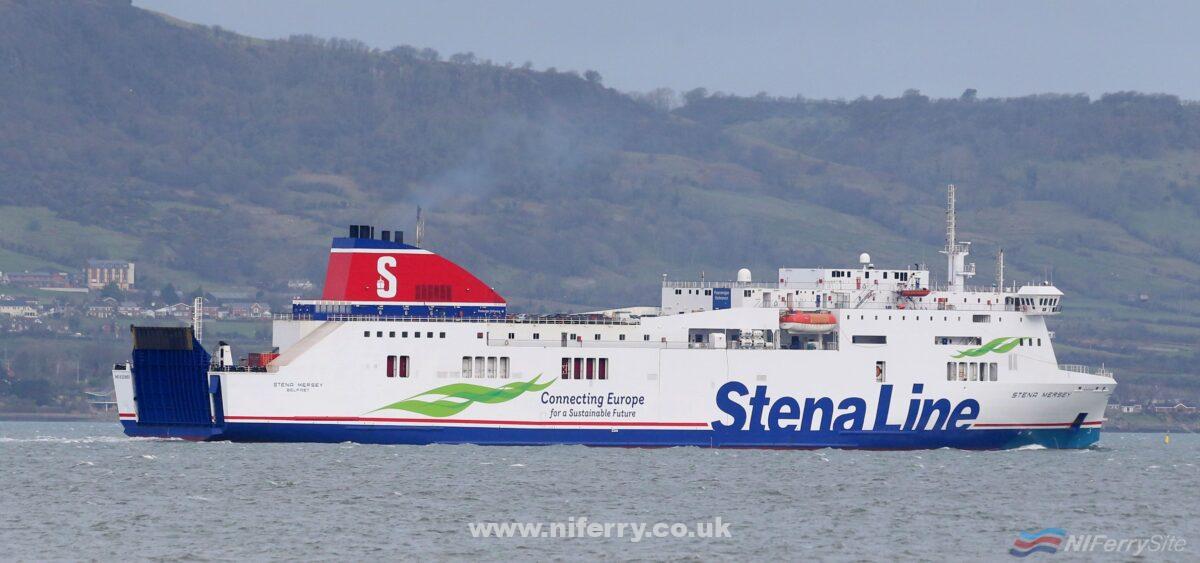
Photographer – © Matt Mackey / Press Eye
Today the former Norse Irish Ferries Belfast to Liverpool route still exists in the form of Stena Line’s Belfast to Liverpool (Birkenhead) service.

Technical data
| Name | NORSE LAGAN | ||||
|---|---|---|---|---|---|
| Previous Names |
| ||||
| Later Names |
| ||||
| IMO Number | 6719342 | ||||
| Building Yard | Davie Shipbuilding & Repairing, Lauzon, Quebec, Canada (Currently named Chantier Davie Canada Inc.) | ||||
| Hull Number | 660 | ||||
| Launched | 12th June 1967 | ||||
| Year Completed | 1968 | ||||
| Delivery date | – | ||||
| In service | Early 1968 | ||||
| In Service (Norse Irish Feries | November 1991 | ||||
| Call sign in NI service | PGJA / MVXX9 [after sale to Norse Irish] / IBCQ [Moby] | ||||
| Conversion/Rebuild | Lengthened by almost 40m and rebuilt as a passenger vessel with the addition of additional passenger accommodation and stability sponsons.
| ||||
| Classification | Lloyd’s Register of Shipping Registro Italiano Navale (RINA) [Moby] | ||||
| Length overall (between perpendiculars) |
| ||||
| As-built | After rebuild | ||||
| 148.1m (137.2) | 187m (176.2) | ||||
| Beam |
| ||||
| As-built | After rebuild | ||||
| 21.7m | 24.4m | ||||
| Depth |
| ||||
| As-built | After rebuild | ||||
| – | |||||
| Draft |
| ||||
| As-built | After rebuild | ||||
| 6m approx | 7m | ||||
| Gross Tonnage |
| ||||
| As-built | After rebuild | ||||
| 12,221 | 21,717 | ||||
| Machinery |
Bow and stern thrusters | ||||
| Mac power | 14,872kW | ||||
| Operational speed | 18.5 kts (18 kts post rebuild) | ||||
| Capacity (as built) |
12 passengers | ||||
| Capacity (Norse Irish) |
| ||||
| Original Flag | St John’s (Canada) | ||||
| Flag under Norse Irish | Nassau (Bahamas) Delfzijl (The Netherlands) Douglas (Isle of Man) |
Norse Lagan Gallery

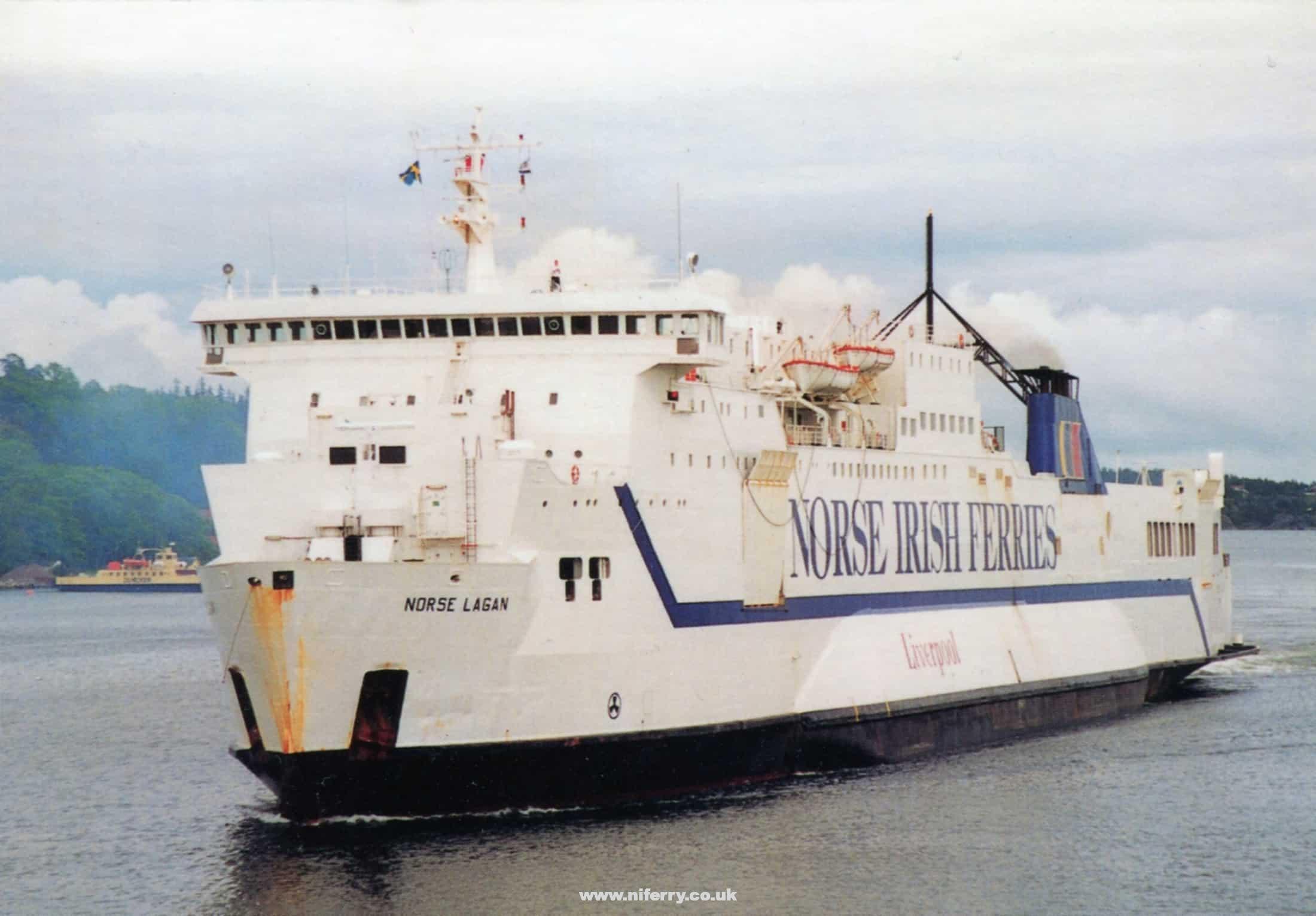

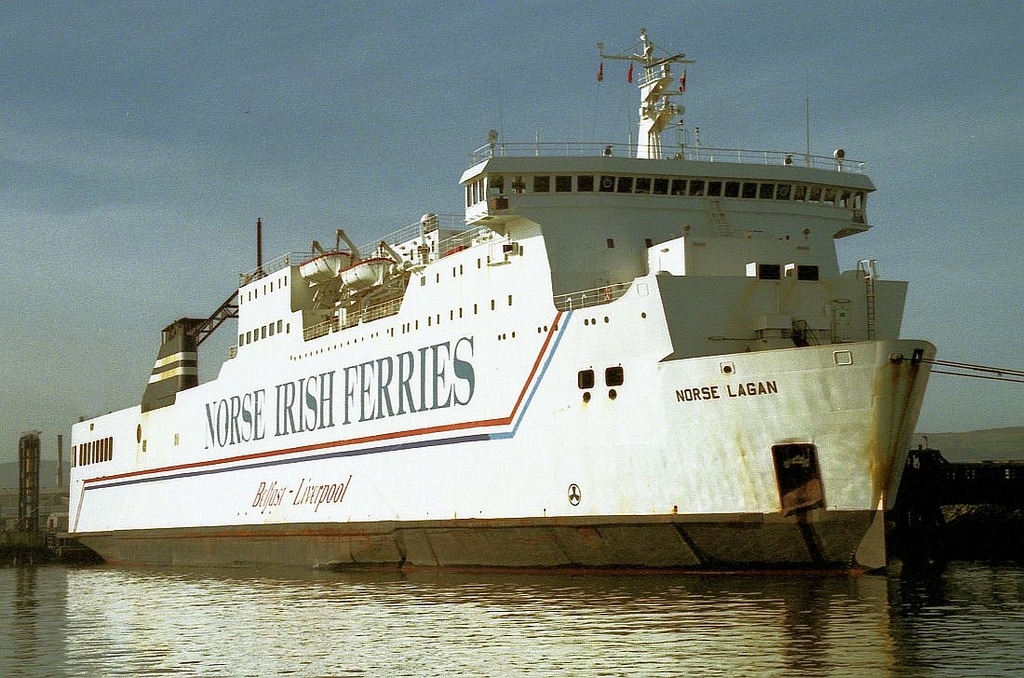
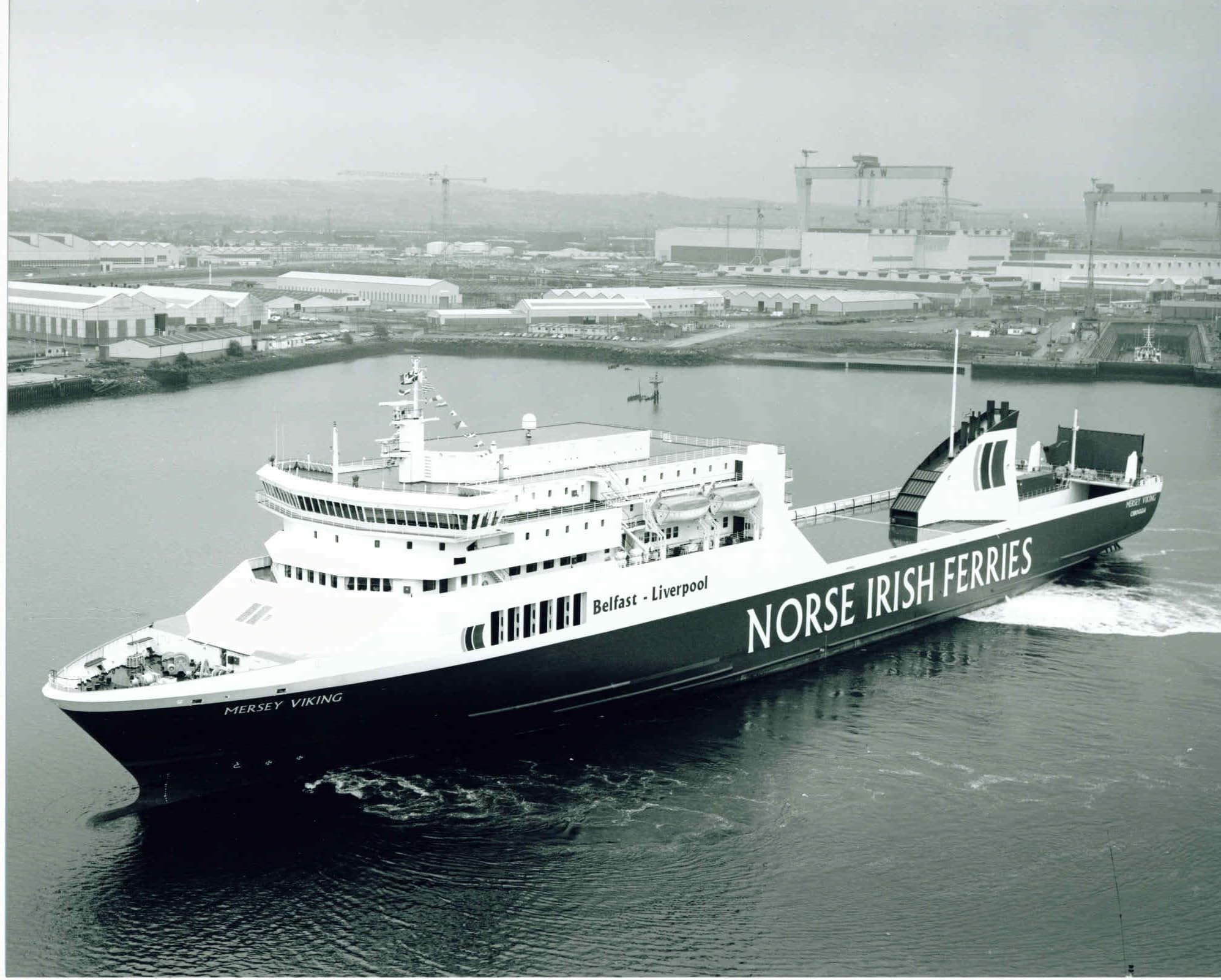


Original article published: 02/05/18
Last update: 02/05/18
